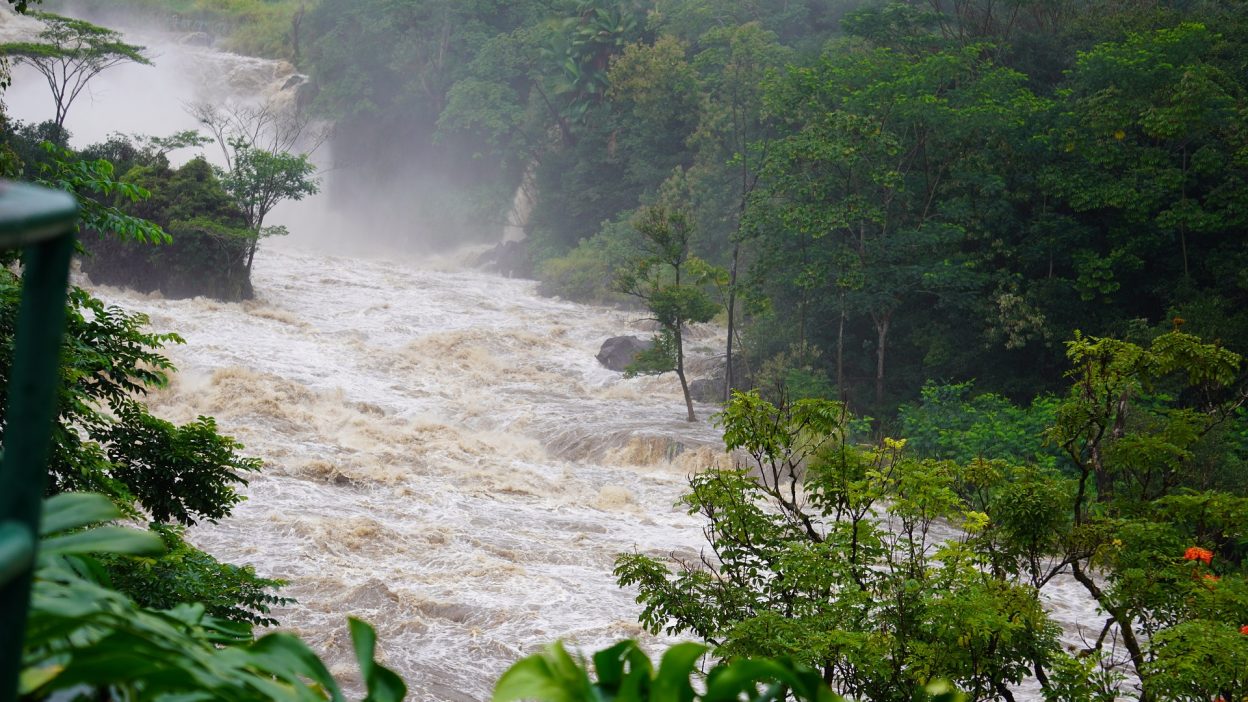How China’s Deadly Disaster Revealed A Nation’s Vulnerability
The 1951 Manchuria Flood is one of the most devastating natural disasters in China’s history, although it often doesn’t receive the attention it deserves. This calamity, caused by persistent rainfall and the overflow of the Songhua River, had an enormous impact on millions of people, deeply affecting the region.
The flood submerged vast areas, displacing over 20 million individuals and causing unimaginable destruction. It’s a stark reminder of how vulnerable human societies can be when nature unleashes its full force. The aftermath of the flood left China grappling with a long recovery process, but it also set the stage for significant changes in how the nation handles natural disasters.
The 1951 Manchuria Flood’s Wake-Up Call: China’s Vulnerability Exposed
The 1951 Manchuria Flood exposed serious flaws in China’s preparedness for large-scale disasters. The country’s infrastructure, especially its flood prevention systems, were inadequate for a calamity of this size. Despite the region’s history of flooding, little had been done to improve flood control measures.
This lack of foresight, combined with issues like deforestation and poor urban planning, compounded the disaster. Existing dams and flood barriers were overwhelmed, making it impossible to manage the immense water levels. The event revealed a deep-seated vulnerability in the country’s disaster response infrastructure, one that would need urgent reforms in the future.
The 1951 Manchuria Flood: A Staggering Loss of Life and Suffering
- Over 1,500 Fatalities: More than 1,500 lives were tragically lost in the flood. Many people were trapped in their homes or carried away by the floodwaters, while others perished trying to escape the rapidly rising water. The death toll left families devastated and communities broken.
- Injuries and Suffering: Thousands were injured, with many suffering severe wounds from the flood’s debris or from drowning. The sheer scale of the damage overwhelmed medical facilities, leading to inadequate care for those who needed it most.
- Millions Left Homeless: The flood affected over 20 million individuals, displacing them from their homes and forcing them to live in makeshift shelters. The lack of basic necessities like food, clean water, and medical supplies left survivors in an ongoing state of crisis.
Could the 1951 Manchuria Flood Have Been Prevented? A Missed Opportunity
In hindsight, the 1951 Manchuria Flood might have been mitigated or even prevented with better planning and preparedness. If more robust flood management systems, such as stronger dams and river embankments, had been in place, the destruction might have been less severe.
Environmental mismanagement, like excessive deforestation, worsened the flood’s impact. When trees and vegetation were removed from the land, the soil could no longer absorb rainfall efficiently, leading to increased runoff that overwhelmed the rivers. Had these issues been addressed earlier, the country might have been able to reduce the magnitude of the flood’s consequences.
The Aftermath of the 1951 Manchuria Flood: A Region Struggling to Recover
The 1951 Manchuria Flood left behind a trail of destruction that took years to overcome. Entire villages were wiped out, and the local economy was severely impacted. The destruction of farmland meant that thousands of farmers lost their livelihoods, while the physical infrastructure, including roads and bridges, was left in ruins.
The recovery process was slow, and it took a tremendous amount of time and resources to rebuild homes and restore basic services. For many, the flood marked the beginning of a long and difficult journey to rebuild their lives, but the region’s road to recovery would prove to be a painful one.
The Government’s Response to the 1951 Manchuria Flood: A Missed Crisis Management Opportunity
- Delayed Action: The Chinese government’s response to the disaster was painfully slow. There was no immediate plan to address such an overwhelming situation, leaving victims without necessary aid for days. As a result, many survivors were left in dire conditions, struggling to find food, shelter, and medical care.
- Lack of Coordination: There was no coordinated response between local and national agencies, which further delayed the delivery of aid to those in need. As a result, some areas received help much later than others, leaving many people stranded in isolation for longer than necessary.
- Inadequate Infrastructure: The flood revealed the country’s serious shortcomings in its infrastructure. Flood prevention systems were outdated, and the government had failed to invest in long-term disaster management strategies. This left the population vulnerable and caused much of the damage that could have been avoided with better preparation.
The Political Repercussions of the 1951 Manchuria Flood
The 1951 Manchuria Flood had significant political consequences in China, particularly in how it shaped public perceptions of the government’s ability to protect its citizens. The scale of the disaster and the government’s inadequate response led to growing dissatisfaction and questions about the leadership’s competence.
Politicians were forced to explain their failure to address the disaster’s scale, with some leaders using the tragedy to bolster their own positions, while others were held accountable. The flood changed political discourse in the country for many years, and questions about governance, disaster preparedness, and accountability dominated the conversation.
Nature or Neglect: The True Cause of the 1951 Manchuria Flood
While nature certainly played a role in the 1951 Manchuria Flood, human negligence was a major factor in its catastrophic consequences. The region was known for its susceptibility to flooding, yet the Chinese government had failed to implement adequate flood control measures to protect the people.
Environmental issues such as deforestation compounded the effects, with excessive rainfall rapidly running off into the already swollen rivers. While it’s impossible to prevent natural disasters entirely, better planning and infrastructure could have significantly reduced the flood’s devastating toll.
The 1951 Manchuria Flood: A Legacy That Continues to Shape China
The legacy of the 1951 Manchuria Flood is still felt in China today. The event acted as a wake-up call, prompting the Chinese government to reform its disaster management strategies and flood control infrastructure. Despite improvements, the lessons learned from the flood still shape China’s policies on disaster preparedness and response.
Today, the country is better equipped to handle floods, but the tragedy of 1951 serves as a reminder of the dangers posed by inadequate infrastructure and environmental mismanagement. It continues to influence disaster policies in China and around the world.
Conclusion: Reflecting on the 1951 Manchuria Flood and Its Lessons
The 1951 Manchuria Flood left a lasting imprint on China, both in terms of the suffering it caused and the lessons it taught. The disaster exposed critical weaknesses in disaster preparedness and management, underscoring the need for better infrastructure and more comprehensive flood prevention strategies.
While China has since made great strides in disaster management, the flood remains a tragic reminder that nature’s forces cannot be underestimated, and that every country must take responsibility for safeguarding its people against such catastrophic events.
5 Short FAQs:
- What led to the 1951 Manchuria Flood?
- The flood was caused by heavy rains and the overflow of the Songhua River, submerging large areas in Manchuria.
- How many people lost their lives in the flood?
- The disaster claimed over 1,500 lives and left thousands injured or displaced.
- What were the flood’s primary effects?
- It resulted in millions of displaced people, widespread agricultural losses, and a crippled economy.
- How did the Chinese government react to the flood?
- The response was slow and disorganised, with victims left without immediate aid in many areas.
- What impact did the flood have on China’s future disaster response?
- The event prompted China to improve its flood control systems and disaster management strategies, leading to more proactive responses in the future.
References:
“List of deadliest floods”
“Typhoon floods kill 4,800 in Manchuria… August 6 in History”




